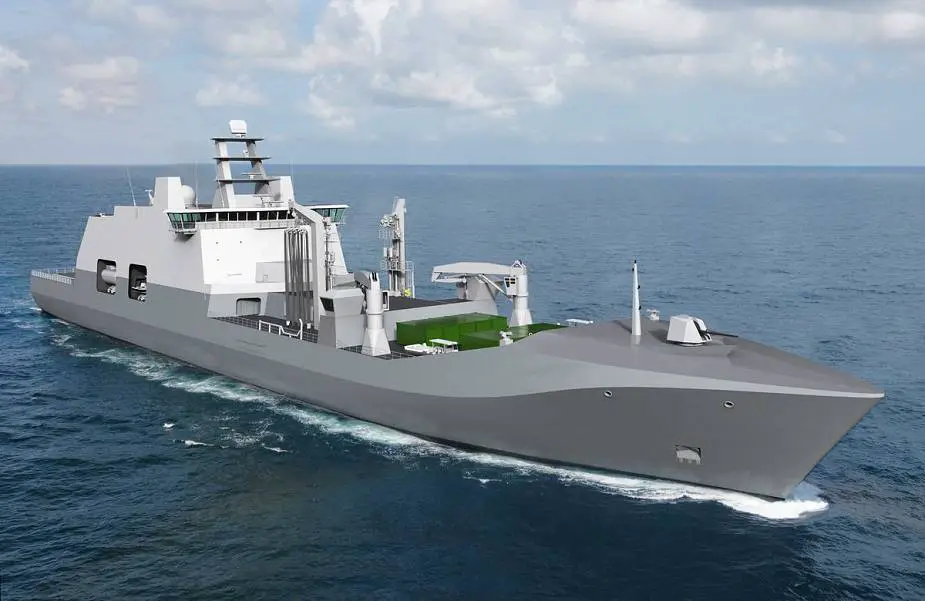According to a press release published on December 2, 2020, the first steel was cut on the Royal Netherlands Navy’s (RNLN) Combat Support Ship (CSS) Den Helder at Damen Shipyards Galati, Romania. The cutting is the first of sixteen batches, totaling 7500 tonnes of steel in 180 sections. his marks an important milestone in this project, the first tangible part of the construction.
According to a press release published on December 2, 2020, the first steel was cut on the Royal Netherlands Navy’s (RNLN) Combat Support Ship (CSS) Den Helder at Damen Shipyards Galati, Romania. The cutting is the first of sixteen batches, totaling 7500 tonnes of steel in 180 sections. his marks an important milestone in this project, the first tangible part of the construction.
Follow Navy Recognition on Google News at this link
 Artist rendering of future Combat Support Ship for Dutch Navy. (Picture source Twitter account Ronald JH Elzenga)
Artist rendering of future Combat Support Ship for Dutch Navy. (Picture source Twitter account Ronald JH Elzenga)
The steel cutting was supposed to take place in February next year. DSNS (Damen Schelde Naval Shipbuilding) has brought the date forward in order to safeguard the project’s progress during the continuing coronavirus pandemic and to effectively manage the enhanced security rules that alter the way of working for the shipyard.
The new Combat Support Ship (CSS) is based on the design of the Joint Support Ship Zr.Ms. Karel Doorman. By taking an existing design as a basis, it is possible to deliver the ship in 2024. The almost 200-meter-long ship will have a 75-person crew and can also take an additional 75 people on board. There is room for several helicopters and around twenty containers. The engineering of the CSS largely takes place in the Netherlands and a large number of components will be delivered by Dutch suppliers. The CSS is built by Damen in Romania, after which the ship’s final components and the combat management system will be installed in Den Helder.
With the construction of the CSS, the maritime supply capacity of the RNLN will be restored. The vessel will operate alongside the Joint Support Ship (JSS) HNLMS Karel Doorman and is based on the same design. The vessel can operate worldwide and under high threat, protected by frigates. Additionally, she can be used in the fight against drug trafficking, controlling refugee flows, and providing emergency aid.
Engineering of the vessel is taking place mostly in the Netherlands and the project will provide work for over 100, mainly Dutch, companies. To date, 47 contracts have been signed for the CSS, out of which 34 with Dutch maritime suppliers.
The next milestone will be in May next year when the keel-laying ceremony will take place.







